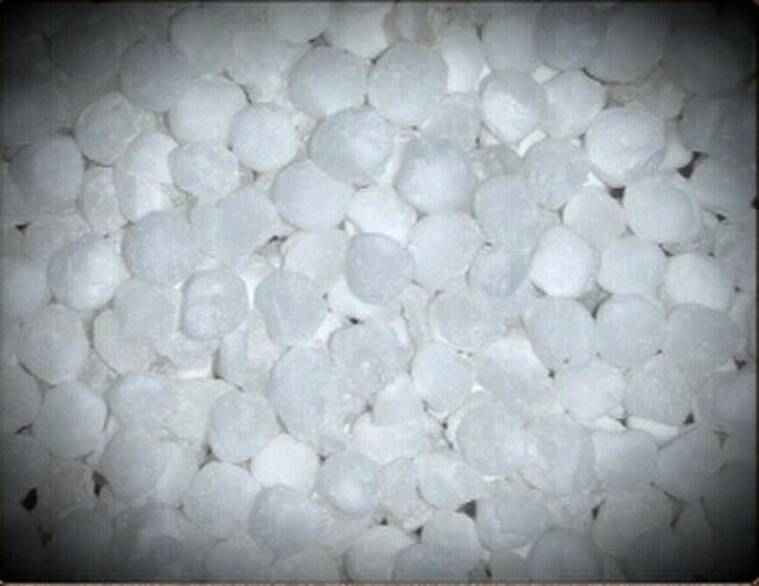Sabudana, also known as tapioca pearls, is a widely popular and loved food item, especially among Indians who consider it an ideal food choice during fasts. Many people appreciate sabudana for its quick and easy preparation, making it a convenient option for meals and snacks. With sabudana being gluten-free, it is believed to be suitable for individuals with dietary restrictions and is considered extremely healthy and nourishing.
But, is it really healthy? Krish Ashok, author of Masala Lab: The Science of Indian Cooking, doesn’t believe so! “Did you know that sabudana is a healthy and nutritious food traditionally eaten during fasts? Did you also know that absolutely nothing in that previous sentence was true? For starters, it’s not healthy,” he started out saying in an Instagram post.
Admitting that he loves sabudana and that it’s delicious and perfectly okay as part of an otherwise balanced diet, but it’s highly ultra-processed starch and nothing else. “If you are fasting, it makes little sense to eat a carbohydrate bomb that will spike your blood sugar. Secondly, it’s not even traditional. Sabudana was introduced in the 1940s and 1950s in India. It is originally from East or Southeast Asia,” Ashok said.
The expert added that boba or bubble tea uses that same starch. “And here’s the best part — it’s not even what you think it is. Many brands of sabudana will call it sago which used to be the source of starchy pearls. But during World War II, sago was difficult to source and some entrepreneurs in Salem, Tamil Nadu, decided to use tapioca which was commonly grown in Kerala and Tamil Nadu to make the same starchy balls. Since then, almost all sabudana is made from tapioca, not sago. So, sabudana is delicious but it is not healthy, not traditional, unsuitable for fasting, and not sago,” Ashok shared.
The author said that while there are several videos highlighting the harmful effects of maida, sabudana seems to have quietly escaped all attention. “It is as ultra-processed as maida is and contains insignificant protein (0.2 per cent) in comparison to maida (10-12 per cent) and is pretty much all starch. And yet, it is regularly touted as some kind of superfood and is regularly consumed as ‘vrat’ food,” he added.
Agreeing, functional Nutritionist Mugdha Pradhan, CEO and Founder, iThrive said, “Sabudana is a highly refined form of starch that is obtained from the roots of the Cassava or Sago plant. Due to the refinement, it is rapidly absorbed in the blood and spikes our blood sugar significantly. It is a very high glycemic food i.e. has a very high GI index,” adding that these kinds of foods should be avoided by people with diabetes and other metabolic health issues like hypertension, obesity, and heart disease.
“If you don’t have any metabolic health issues or other health conditions associated with blood sugar regulation, then you can enjoy sabudana occasionally as part of a balanced diet,” she added, sharing that what is good about sabudana is since it’s refined, it does not contain any fibre or other plant antinutrients. “Thus, it is easy on the gut and provides quick energy without affecting the gut.”
 Almost all sabudana is made from tapioca and not sago, Ashok claimed (Source: Wikimedia Commons)
Almost all sabudana is made from tapioca and not sago, Ashok claimed (Source: Wikimedia Commons)
Adding, Mohini Dongre, Senior Dietician, Narayana Hospital, Gurugram said that sabudana is low in nutrients and should be consumed as part of a balanced diet that included other nutrient-rich foods. However, she added that “sabudana is a good source of carbohydrates and can provide a quick energy boost. It is also gluten-free and easy to digest, making it suitable for those with gluten intolerance or digestive issues”.
Advertisement
Should it be consumed during fasts? According to the dietician, it can be included in fasting meals when prepared with fasting-approved ingredients like rock salt, ghee, coconut, and peanuts. “However, portion control is important, and it should be eaten in moderation alongside other fasting-approved foods to maintain a balanced diet,” she said.
Pradhan, however, said that you should not be consuming any caloric foods during a fast because technically fasting means not consuming any foods, particularly caloric foods. “Even for breaking a fast, sabudana is not a suitable option since your insulin sensitivity is high during fasting and high glycemic foods will drastically spike your blood sugar at such a time. Such drastic variations in blood sugar stress the endocrine and nervous systems and are not recommended. Break your fast with a light low glycemic meal,” she explained.
Dongre shared the following dos and don’ts regarding the consumption of sabudana.
Advertisement
Dos: Soak sabudana before cooking. Cook it well. Pair it with other ingredients like peanuts and coconut, and follow specific guidelines for the fast you are observing.
Don’ts: Don’t rely solely on sabudana for nutrition during fasting. Include a variety of fasting-approved foods. Don’t overconsume sabudana, as it can lead to excessive carbohydrate intake and digestive issues.
📣 For more lifestyle news, follow us on Instagram | Twitter | Facebook and don’t miss out on the latest updates!








